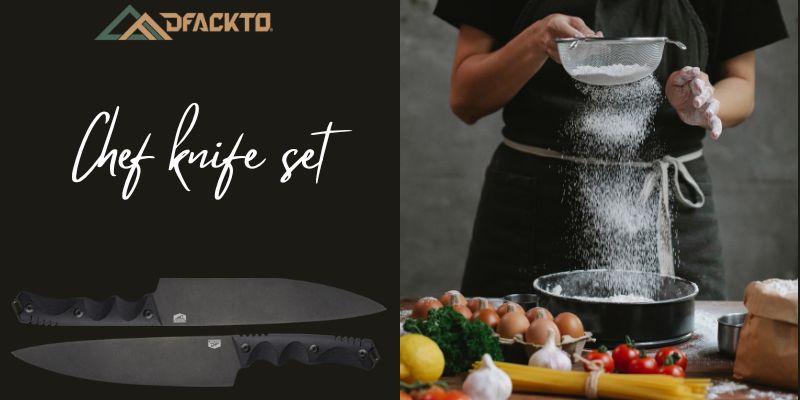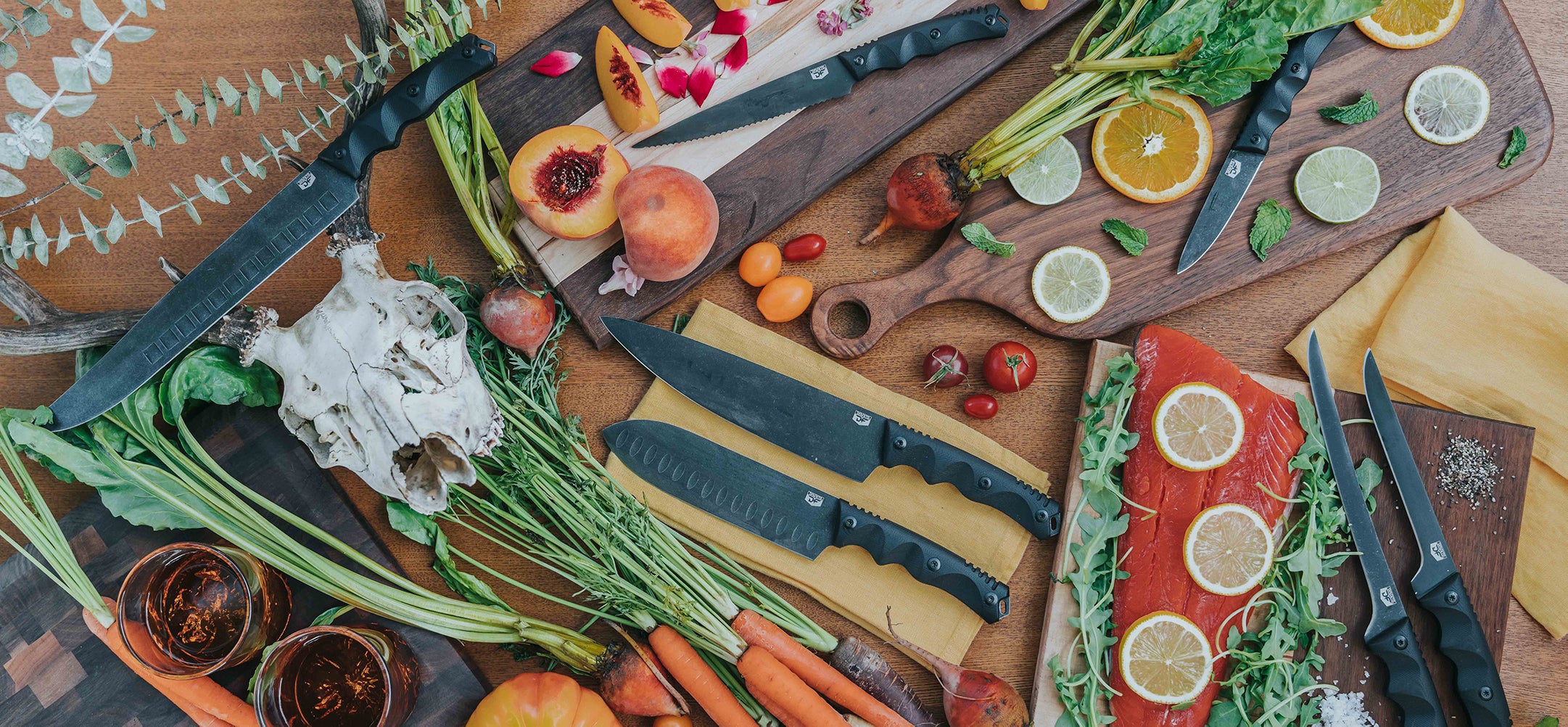We all have set up places in our homes for various activities. Let’s say bedrooms are for sleeping, living rooms are for relaxing and kitchens are for cooking. Knives are essential in the kitchen for food preparation. The boning knife and the cleaver are two of the most popular tools at every home.
When it comes to Best Boning knife for bbq and cleaver, both of them differ in looks and uses. Boning knives are smaller in size and cut raw meat off the bone. On the other hand, cleavers have big, rectangular blades. They are used for chopping through both meat and bone. You'll have a closer look at them as you keep reading.
Parts of a Knife
- Butt: Rounded end at the bottom of the handle.
- Handle: Part number two, containing the tang.
- Tang: Part inside the handle connecting the blade through rivets.
- Bolster Buffer zone between handle and blade, balancing the knife and protecting fingers.
- Blade: Consists of the spine, edge, tip and point.
Importance of Knowing Knives
- Understanding parts gives confidence and comfort while using knives.
- Knowledge leads to safer and more effective use.
- No need to be intimidated but familiarize yourself with them.
Now it's time to take an up-close look at the boning knife. From there, we'll move on to the cleaver knife.
The Boning Knife
The boning knife's name is a little misleading. It doesn't actually cut through bones. But if you think about the verb "bone," which means "to remove the bones from," it becomes more apparent. The best Boning knife for bbq is used to cut raw meat away from the bone precisely. It's a practical kitchen tool in meat departments. They can be casual despite coming in various designs and prices.
Coming to the size, a typical boning knife is around 6 inches long. Its appearance has a slender and flexible blade curving gently upward to a point.
How Do I Use a Boning Knife?
When working with a boning knife, start by placing the blade tip on the meat. Begin with a tiny incision and then smoothly pull the blade into the flesh. To detach it from the bone, use a sawing motion. You can follow the instructions outlined below for maximum results.
Proper Handling:
Grab the knife's handle using three fingers first. Then place your index finger on top of the blade. This grip gives you control and precision while cutting.
Blade Flexibility:
The Best Boning knife for bbq has flexible blades. The advantage of it is that it can bend to work around bones and tricky areas. Getting used to it only takes a bit of practice.
Matching the Meat:
A boning knife with a strong blade is recommended for hard meats like beef. When chopping through it, the knife provides more stability.
Accuracy and Versatility:
Boning knives are made with accuracy in mind. They aren't simply for chopping meat. The blades are also capable of removing the skin off fish fillets and slicing a variety of fruits and vegetables. It is a great choice for barbeque events,
Choosing the Right Tool:
Keep in mind that different knives are created for different tasks. Choose the one that matches your needs.
What Kind of Knife Can Cut Through Bone?
The best boning knife is a kitchen hero, but it's not meant to cut through bones. Just like you wouldn't use a boat on the road or an airplane in water. Likewise, different tools have their specific purposes. When it comes to cutting through bones, what options do we have?
Aside from the cleaver, a different tool, the butcher knife, is effective. People frequently mix up the phrases "butcher knife" and "cleaver," but there are significant differences.
Butcher knives range in length from 8 to 12 inches. Their long, intimidating blade waves to a sharp tip. These knives are used by hunters and travelers in the wild as well as in chef's kitchens across the world.
The Cleaver
Holding one cleaver knife gives you more confidence. It's great for slicing meat and bones. However, you must use caution when using the blades. The blade is broad and has a thick grip. A cleaver, unlike boning knives, is used to cut downward. It's difficult and requires a hard swing. Use one sparingly because it is sharp and potentially dangerous. Then we'll go through how to utilize it securely and effectively.
How Do I Use a Cleaver?
Chopping
Hold your arm above the meat while chopping. Then, with your elbow slightly bent, cut down. Meanwhile, flip your wrist. Work with the knife's weight and allow it to do most of the work.
Safety Is Priority
First and foremost, using a cleaver may appear dangerous, with the large blade elevated high. Maintain a safe distance with your free hand and make sure everything stays in place while you chop.
Finger Position:
If you need to hold the meat, keep your fingertips bent inwards. It's an essential precaution used by professionals.
Practice and Caution:
Professional chefs can chop with their fingers closed. Remember, it comes from experience. If you're new to cleavers, take it easy. Get acquainted with the blade and use it safely.
Boning Knife vs. Cleaver
Boning Knife:
- Doesn't cut through bone.
- Removes meat from bone.
- Small, thin blade, sometimes flexible.
- Extremely precise.
Cleaver:
- Large with a thick handle.
- Cuts through raw meat and bone.
- Blade made of durable metal.
- Useful for slicing and mincing
The Bottom Line
When you are in the market for a high-performance knife, look only as far as DFACKTO. Experience the cutting and slicing excellence for yourself. Browse a range of practical and efficient knives at the best price online. Get yourself the Best Boning knife for bbq, cleaver knife, butcher knife, chef knife, and more. It's time you own the best kitchen essentials to showcase your skills. Shop the collection today – grab it now!



